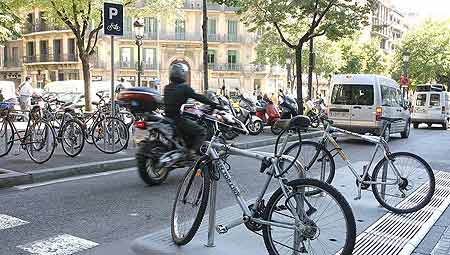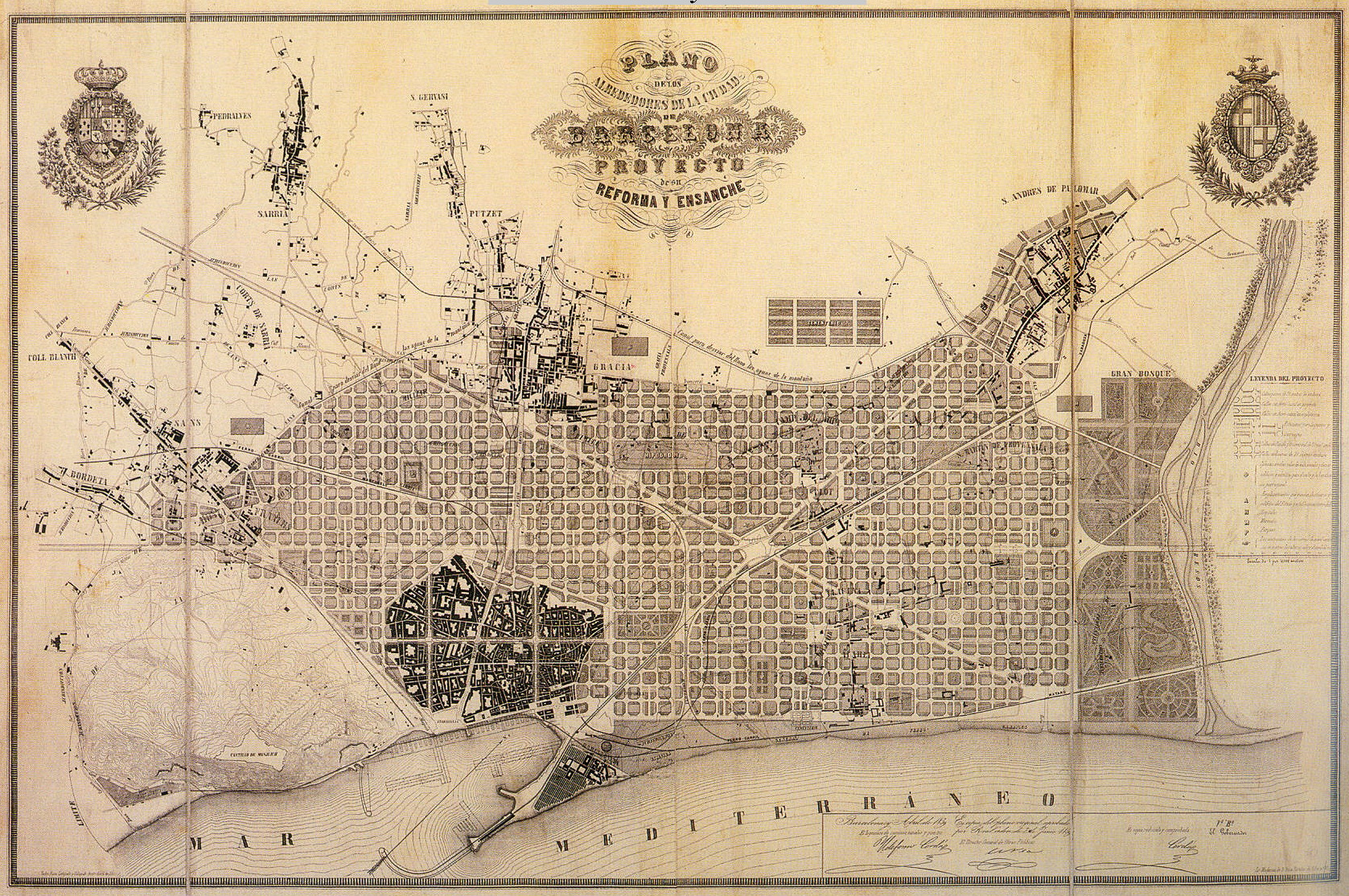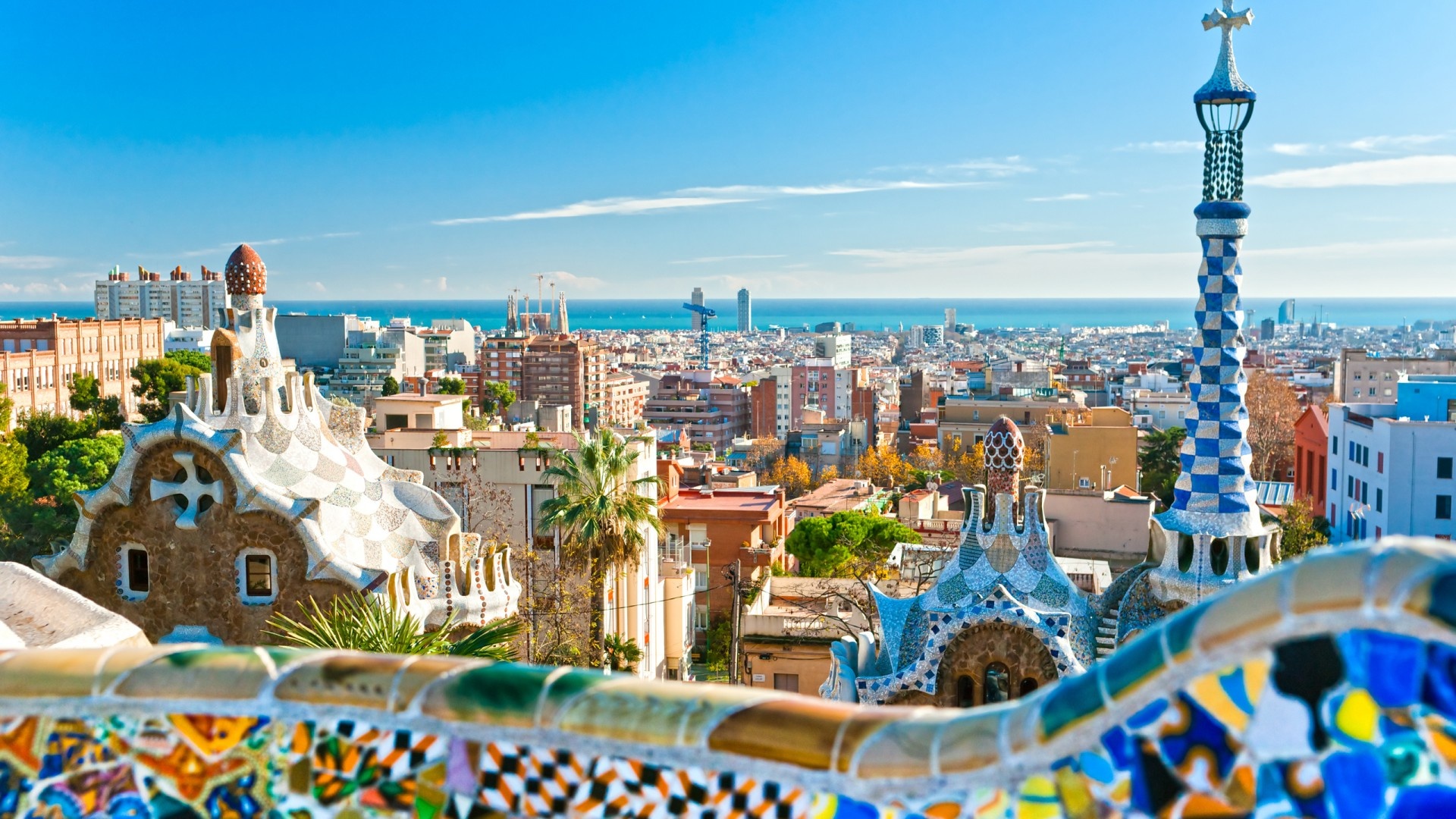If you are adventurous and like to do some extra exercise, don´t stop at Parque Güell but take the bike into the park (push the bike, pedalling is not allowed) and exit the park towards Parc del Guinardó, where you will visit the so-called "Bunker" (officially the Centre d'Interpretació Histórica Turó de la Rovira), where once the artillery installations of the Spanish civil war were located. From there you have a very nice 360º panoramic view of Barcelona. There are also boards explaining the history of the site.
 |
| View from the bunker |
After exiting Parc Güell, you first have to push the bike a stretch of 100m uphill through a small residential area before entering Guinardó Park. Very soon you will come across a stairway which takes you towards the summit.
After visiting the Bunker you go through the Parc del Guinardó (biking is allowed here) and exit at the point where a series of 3 elevators and 1 escalator bring you down to Carrer del Telegraf. The elevators have space for 2 bikes.
| Parc del Guinardó |





















